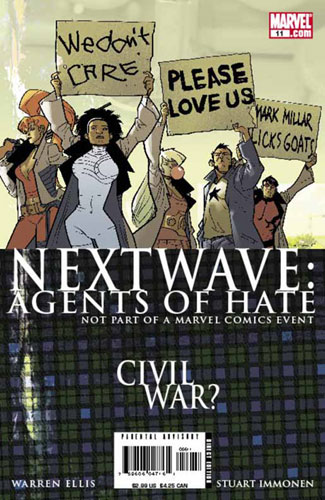Trivia question: Who is the best Spider-Man writer not named Stan Lee?
- J. Michael Straczynski
- Paul Jenkins
- Gerry Conway
- Howard Mackie
BZZZT! None of the above!
The answer, my friends, is J. M. DeMatteis. And it’s not even close. His run on Spectacular Spider-Man in the 1990s with Sal Buscema was a personal favorite of mine, and his work was so good Marvel trusted him to write the death scenes of two key characters in the Spidey mythos, Harry Osborne and Aunt May.
But this, this is the good stuff.
In his introduction, DeMatteis talked about how this story demanded to be told for years. At first, he thought it would be a good Wonder Man story, or maybe a Batman story. But after years of rejection, he used it here, and cast Kraven as the villain once he realized Kraven was Russian. DeMatteis has a soft spot for Dostoyevsky, you see.
Mike Zeck’s the artist on this book, and wow. DeMatteis writes of his cohort, “I’ve been playing this game long enough to know that writer/artist chemistry can’t be created or forced: it’s either there or it’s not. With Mike, it was there…and then some.” No argument from me- Zeck gets Kraven perfect here. That’s not an easy job- in this story, Kraven emotions run the gamut: wiry, confident, mad, ecstatic, emotional, depressed, mirthful. Zeck gets them all, and he does it through Kraven’s eyes. Take a look:




Young artists, take note. This book doubles as a manual for drawing eyes.
DeMatteis adds a lot of richness and depth here by playing off symmetry; the book’s actual title is “Fearful Symmetry”, and there’s lots of it here. Example- at the beginning of the story, Spidey attends the funeral of a street thug and gives money to his funeral, asking for “a decent box and a piece of ground.” After his first encounter with Kraven, that’s what he gets- for himself. Funerals, spiders, light- all are motifs played extensively in this story, but not for repetition. Each time we see a repeating theme, the stakes are raised, and the tension builds.
There’s an unexpected bonus here: the lettering of Rick Parker, one of the medium’s most underrated artists. Parker’s actually a cartoonist, most noted for his work on the Beavis & Butthead comic, but he was always fantastic on letters. Unfortunately, when the industry moved to digital lettering, there wasn’t a lot of need for hand letterers, and I haven’t seen a Rick Parker credit in a comic for a while. Let us know if you’re alive, Rick!
This edition is the first in Marvel’s new Premiere Classic editions, hardcover reprints of classic stories. The reproduction’s a tiny, tiny bit wonky at times, as you can tell that the trades department at Marvel worked overtime to make this book look as good as it could. I actually had a copy of the previous hardcover reprinting done in 1989, and Marvel should be proud of the work they did. The linework’s much stronger, there’s a great intro by JM, and they reproduce two issues of Zeck’s original pencils.
I only wish they had included Stan Lee’s introduction from the 1989 volume; after all, how often do we get a book with work by the two best Spider-Man writers of all time?
DeMatteis and Lee;
Ah, to be joined in one book.
Still, buy this Last Hunt.



 I stared at that two-page spread for a while. I couldn’t figure out if the hair on his head was his beard or his crown. These aren’t the only strange choices. His illustrations of Lucille Pelliccia are positively unnerving at times.
I stared at that two-page spread for a while. I couldn’t figure out if the hair on his head was his beard or his crown. These aren’t the only strange choices. His illustrations of Lucille Pelliccia are positively unnerving at times.

